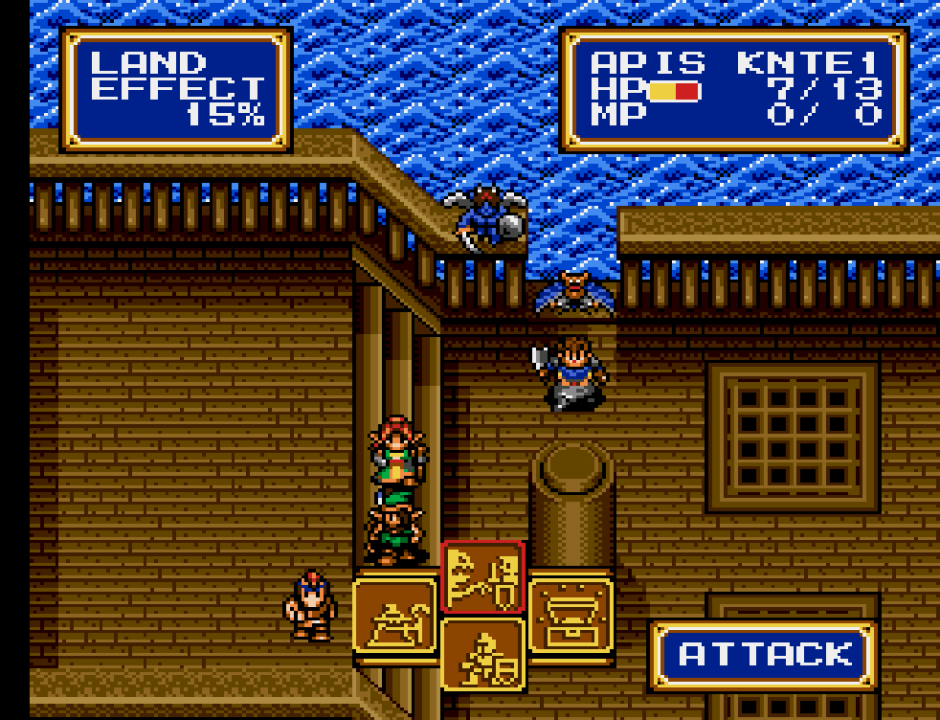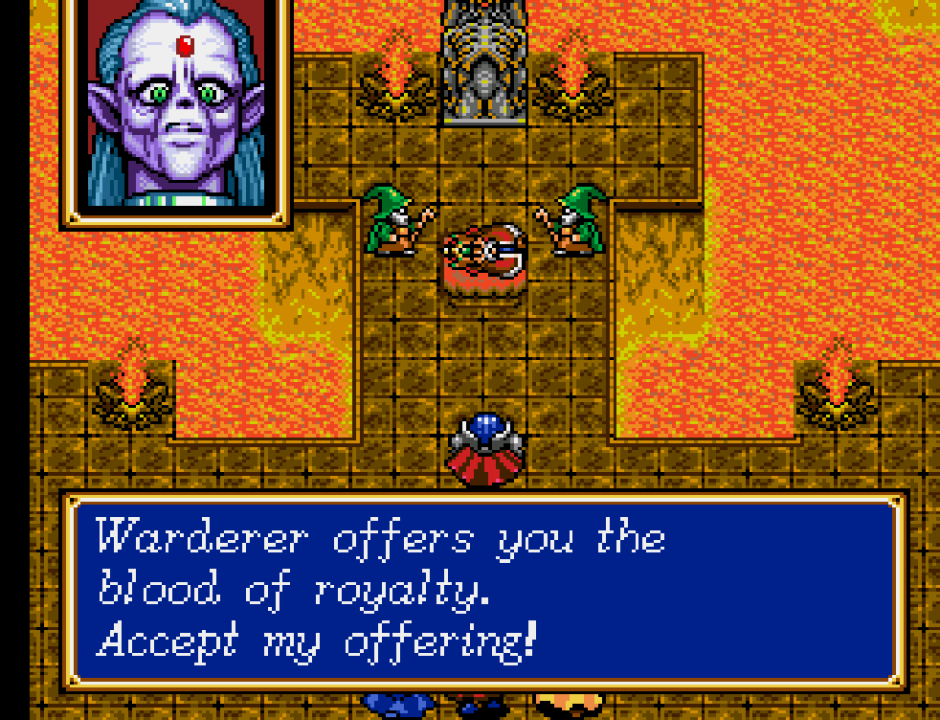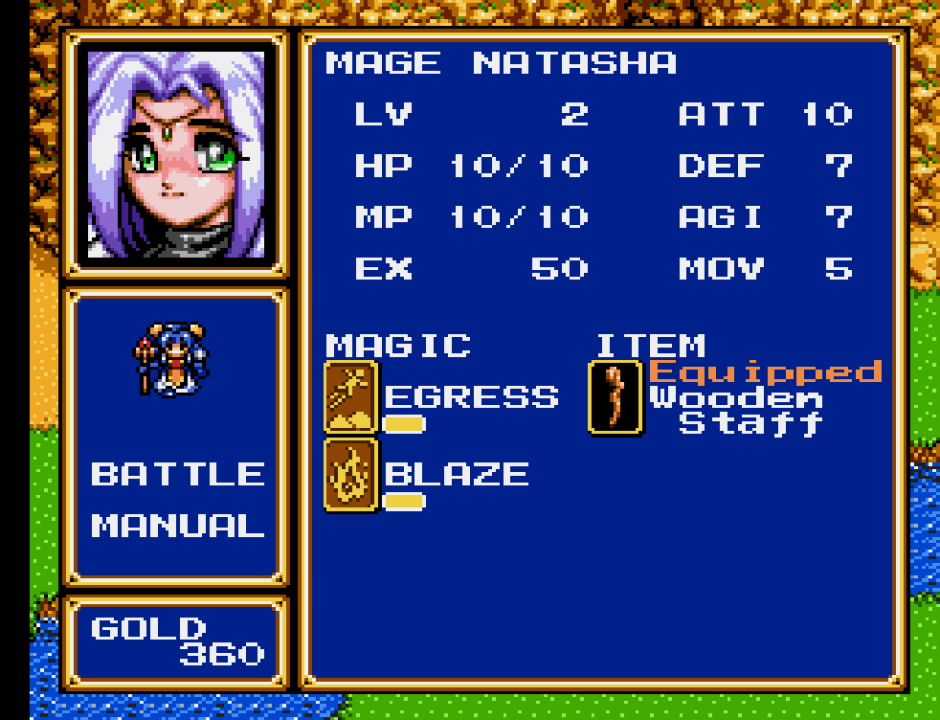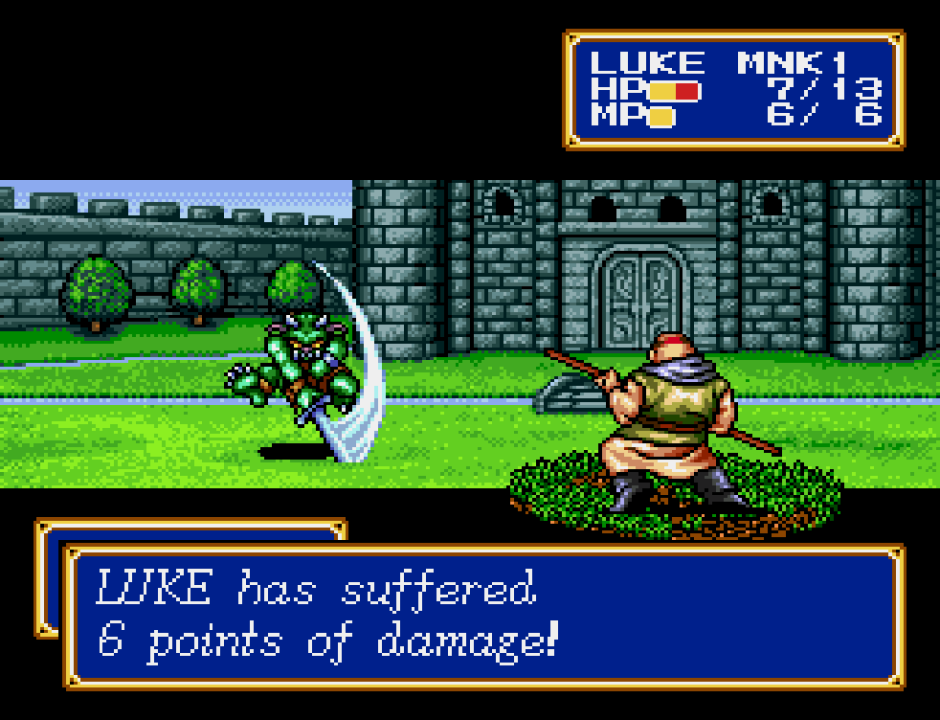Believe it or not, Shining Force CD was one of my white whales of gaming. It’s trapped on the SEGA CD with a divisive library that largely doesn’t interest me, giving me few reasons to buy the system. SEGA released Shining Force CD late in the system’s lifecycle, and the SEGA CD isn’t known for its reliability, either, so finding the game and a working system is an expensive proposition.
I prefer to play on original hardware when possible, so when I learned Shining Force CD would be included on the SEGA Genesis Mini 2, I immediately preordered it. It’s the closest I can get to the original experience without making laughably unwise financial decisions.
While Shining Force CD appears to be an original game, it’s mostly a compilation of Shining Force Gaiden and Shining Force Gaiden II, both of which are Game Gear games. SEGA only localized the latter, known in the States as Shining Force: The Sword of Hajya. Astute players will notice that Shining Force CD and the Sword of Hajya use the same box art with slight differences in color and composition.
Shining Force CD is split into four books: Book 1 is Shining Force Gaiden, Book 2 is The Sword of Hajya, Book 3 is a six-level arc taking place immediately after Sword of Hajya, and Book 4 is a single, controller-throwingly difficult level. Books 3 and 4 are new content exclusive to SFCD. With 53 levels, SFCD is bursting with content and longer than the first two Genesis games (which contain 30 and 44 levels, respectively). I played Books 1–3 on normal, which felt about on par with the previous games’ difficulty. Book 4 is its own beast, which I’ll get to later.
Shining Force CD Book 1: Shining Force Gaiden
I suspect SEGA wanted to recreate Shining Force’s success with a portable entry for its handheld, and the Gaiden games do an admirable job of living up to the lofty standards set by the first entry. Porting a massive strategy RPG to a weaker system isn’t a task for the faint-hearted, but developer Camelot Software Planning managed it with a few caveats.
Since the Game Gear is basically a portable Master System, some cuts were necessary to make a portable Shining Force work. Notably, no town exploration mechanics exist in either game or, to keep the design consistent, in Books 3 and 4. Befitting this downgrade, everything is smaller—fewer playable characters, smaller and fewer levels (per game), and a ton of familiar content. The battle system is identical to previous entries, and all the classes, spells, weapons, and items you’ve used before are here, too. While the locations are ostensibly new, it might not feel like it—you travel through many forests, valleys, caves, and castles during your journeys, and it’s hard to shake the feeling that you haven’t seen these places before.
Party management and shopping are accomplished through a camp menu. You can talk to your party members through this menu, too, but they mostly throw out banal one-liners. This setup works fine mechanically—it’s similar to Shining Force’s base setup minus the actual base.
Camelot’s decision to omit towns and exploration made sense on the Game Gear—limited space and capabilities mean you toss anything that isn’t essential. While these elements don’t exactly sing in the Genesis Shining Force games, they allow for more character and narrative development, which are sorely lacking here. More importantly, those elements provide you with some downtime. Since Shining Force CD is nothing but battles, the pacing starts fast and never lets up, which can honestly be a bit much by the time you reach the end of each Gaiden game.
Shining Force Gaiden is a sequel to the original Shining Force—an unnecessary narrative tie-in. Gaiden takes place twenty years after the original game’s ending and sees Anri as queen of Guardiana. Woldol, an ambassador from the Cypress Kingdom who definitely isn’t evil (his henchmen kill Anri’s guards, but she’s cool with it), gives Anri a box of knockout gas, putting her into a deep sleep.
Some of the original game’s characters band together to hunt Woldol down, but they fail. So, their kids, including the new leader of the Shining Force, who literally drops out of nowhere, band together to save their parents and the kingdom. It’s wacky, but our plucky brigade eventually manages to vanquish Woldol, who, unsurprisingly, isn’t the real antagonist, which sets up The Sword of Hajya’s plot.
Shining Force CD Book 2: Shining Force: The Sword of Hajya
The Sword of Hajya is narratively the better of the two because Shining Force Gaiden acts as world-building for it. It starts immediately after its predecessor ends and begins with a human sacrifice and a ton of scheming. It sets the stakes high because you know you cannot stop your party from falling into a trap. Much like Gaiden, though, all the plot “revelations” occur at the end, and it awkwardly tries to shoehorn in a love story about two minutes before the credits roll.
A closer look at Shining Force Gaiden and The Sword of Hajya’s narratives adds credence to my suspicion that SEGA just wanted portable Shining Force and nothing more. Both games’ narrative structures resemble each other and Shining Force’s. In fact, they follow the original almost beat for beat. There are the predictable plot twists, the antagonist using someone as a puppet and summoning something evil, ridiculous coincidences, and a good old-fashioned deus ex machina, too.
Tying Gaiden and Hajya’s narratives to the original Shining Force is a liability. It adds nothing to the series’ narrative canon, and the connection prevents the two from having a unique setting—the first game already established the world, so the narrative can’t drift too far from its origins. Shining Force CD also ditches the original’s sci-fi elements and opts for straightforward fantasy, unfortunately.
I don’t expect groundbreaking storytelling from thirty-year-old games. But I’ve experienced this story before, and maybe Camelot could have tried a little harder to zhuzh it up, especially when they ported it for Shining Force CD. From what I can tell, all the dialogue, scenes, and narrative arcs are directly carried over from the original; however, I love how the bosses scream “Ahh!” and then explode. Everyone is constantly exploding in Shining Force!
As I mentioned, Shining Force CD plays exactly like the previous Shining Force games; however, minor differences keep things interesting. A possessed ship in The Sword of Hajya shanghais half your party—can’t say I expected that. A few levels have floors that break or other environmental hazards. Some enemy attacks, particularly the bosses’ AoE attacks, can quickly devastate your party. Having fewer characters in each game can also force you to use classes or characters you might not otherwise use if your chosen characters’ growths don’t pan out.
Shining Force CD: Books 3 & 4
Shining Force CD shines in Book 3, though. Taking place a few months after the conclusion of The Sword of Hajya, it only consists of six levels, but they pack a punch. Each has a different gimmick, such as zombie reinforcements bursting from the ground or ninjas appearing out of thin air. I wish such mechanics had been added to the Gaiden games, because they revitalize the standard Shining Force experience. It also has a decent plot twist that caught me off guard.
Book 4…whew. Book 4 has a simple narrative framing: the Shining Force visits a museum packed with sculptures of all the bosses in Books 1–3, and, wouldn’t you know it, they all come to life. Even on the easiest difficulty, I still had to use save states to manipulate my way through it. It is the most challenging battle I’ve played in the series thus far. The cutesy ending is not worth the effort, either.
Also, I don’t recommend marathoning Shining Force CD like I did for this review. I adore Shining Force—the original is a top-tier game for me—and while I appreciate all the content that SFCD contains, it’s a lot of content! Playing these games back to back to back to back was too much. I had to take breaks midway through Sword of Hajya and Book 3, which wasn’t ideal, and Book 4 was not for me, although I powered through it.
While the Gaiden games get quite a glow-up in their transition to the SEGA CD, it’s less impressive compared to Shining Force II, which SEGA released about a year earlier. I wouldn’t be surprised if SFCD is running a modified version of SFII’s engine but with a little more oomph. The environments and in-battle graphics look smoother, the characters have a few more frames of animation, and the spells are bigger and flashier. It’s the best Shining Force has ever looked, but I wouldn’t call it an essential upgrade either.
That said, Shining Force CD’s soundtrack is mostly orchestrated, a remarkable improvement over the originals. Composer Motoaki Takenouchi’s soundtrack, which is classic Shining Force fare (rousing battle, peaceful camp, and menacing end-game themes), returns in full force. Most sound effects, such as explosions, slashes, and punches, are more forceful. Surprisingly, some of the songs and sound effects are borrowed from Shining Force II, and it’s jarring when SFCD switches between beep-boops and orchestration. I’m unsure why they didn’t fully commit to overhauling Shining Force CD’s aural presentation, but what is here is excellent.
Shining Force CD also lets you import your save data between games (SFG -> SoH -> Book 3 -> Book 4). How much of an impact does this have? I’m honestly not sure. I can say for certain that my favorites were more powerful than the new characters, but I’m unable to quantify to what degree.
Because it’s on the SEGA CD, Shining Force CD also has several FMVs—well…they’re more like images with a tiny amount of animation. They’re also narrated by what sounds like an exhausted father who doesn’t want to read this story to his kids again. They add nothing to the experience.
I have one final suspicion about Shining Force CD—much like SEGA may have wanted portable Shining Force by any means, I think they also wanted Shining Force on the SEGA CD, and this was the easiest way to accomplish that. Perhaps they thought it would help keep the console alive until the Saturn arrived a few months later. The SEGA CD didn’t last much longer after SFCD’s release, though…
Shining Force CD is excellent by virtue of its lineage. The Gaiden games follow so closely in the original’s footsteps that they can’t be anything but great; however, I couldn’t shake the feeling of déjà vu caused by that connection. SFCD is easy to recommend to fans of the series and SRPGs—but know there’s a chance you’ve played it before, even if you haven’t.






